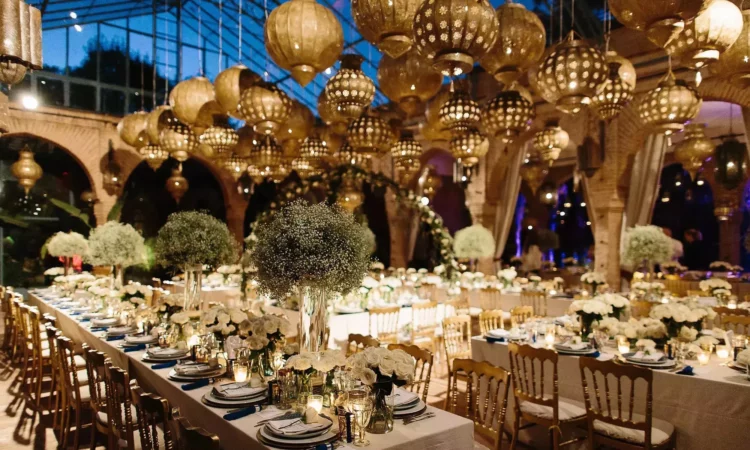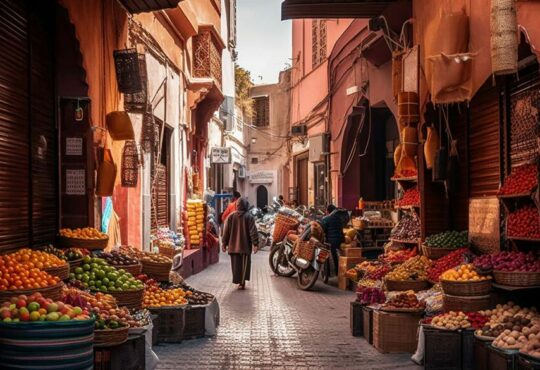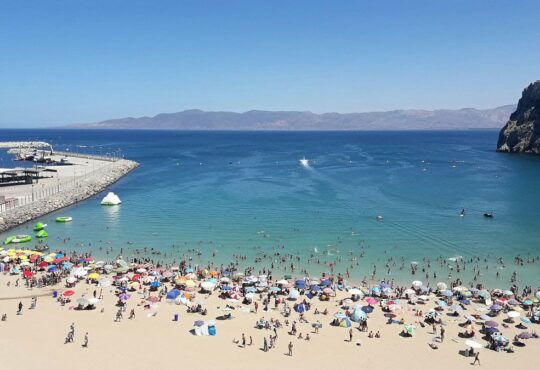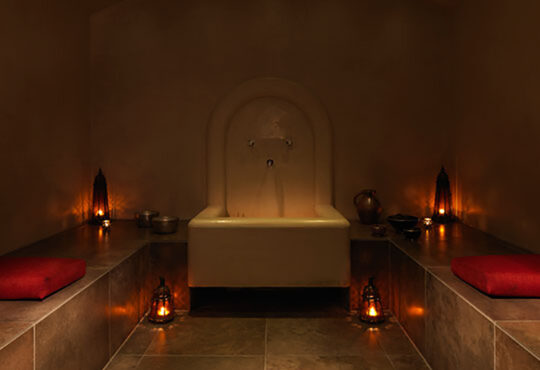
The wedding is a very important celebration in Moroccan culture. It is a celebration of the age-old union of man and wife. The institution of marriage is highly celebrated and respected in Amazigh culture and according to Islamic tradition. Therefore, the Moroccan wedding is a celebration that is taken very seriously.
Every country has its own way of celebrating joy and happiness at weddings. But a Moroccan wedding tells an exceptional story of rich culture and ancient heritage. This spectacular story begins and ends with traditional music, relentless dancing, and plenty of scrumptious food and fancy gifts.
This obviously isn’t enough to describe how a Moroccan wedding truly goes. So, let’s walk you through all the details of Moroccan weddings from the start until the end. Are you ready?
What you need to know is that Marriage traditions in Morocco are quite different from conventional popular marriage culture. According to Moroccan marriage customs, wedding vows should be conducted before the day of the wedding day. Drib Sdak is when both the groom and the bride sign their marriage contract called “Akd Zawaj”.
Signing the marriage contract requires the presence of both the man and woman, their family, and an “Adoul”, a religious man who has the legal right to conclude marriage.
Usually, the day of Drib Sdak is also a small celebration that includes mostly close family members and friends of both the groom and the bride-to-be.
After Drib Sdak, the couple is both religiously and officially married. Both families will now start the preparations for their colorful wedding day. In the Moroccan wedding traditions, the bride arranges a big celebration before the wedding day in her parents’ house.
The groom and his family are invited and they must bring gifts including clothes, jewelry, and sweets to the bride and her family. The celebration lasts about 8 to 10 hours. At the end of the day, the groom’s family leaves to get ready for the welcome day. The wedding day.
Moroccan wedding is usually held in private venues in big cities. Sometimes, Moroccan families living in traditional areas in Morocco set a venue on their rooftops or backyard if they have enough space.
The Moroccan wedding celebration used to be seven days long but now the game has been somewhat shortened to a mere three-day celebration. This last celebration is when the bride moves from her parent’s house to start a new chapter of her life with her husband.
While there is no standard way of celebrating a Moroccan wedding, I will try to get you as close as possible to the general Moroccan marriage customs and traditions.
The first day of the celebration is when the bride undertakes a bridal ritual of purification and beauty, a day in the Hammam with her girlfriends. In case you are wondering, a Hammam is a weekly bathing ritual for Moroccans performed in vast steam rooms, usually 3, with different heat temperature settings.
During the Hammam, the bride and her companions treat themselves with multiple body masks, scrubs, and massages using multiple Moroccan beauty products. Of course, laughter and gossiping are a part of this relaxation ritual.
The next day is the Henna party. A female gathering of friends and relatives for the Henna ceremony. On this day all the young females have henna designs tattooed on their hands and feet. Henna is long considered a symbol of fertility, luck, and happiness in Morocco.
The Henna party is always accompanied by chants and dances. The woman that does the henna “Nekkasha” is usually a Henna specialist who knows how to choose quality henna but most importantly how to draw beautiful designs for the bride and her friends.
The celebration generally happens in a rented venue or in a massive tent set up on the roof of a house or out in the street, why not. On the day of the wedding, the guests gather at the venue. The men are dressed in suits and the women in colorful Takshitas. Takshita is like a Kaftan, a traditional Moroccan garment for women, worn for happy occasions and celebrations such as weddings.
The guests are served Moroccan tea and sweets while waiting for the bride and the groom’s charming entrance. The awaited couple enters the venue followed by the chants of the Neggafates, the master planners of the wedding party.
During the day, the bride changes into several outfits that can go up to seven different ones. The outfits usually represent different parts and cultures of Morocco such as Berber, Fassi, and Sahrawi outfits. The groom usually wears a tuxedo and later changes into a traditional Moroccan outfit called Jabadour.
One of the most famous traditions at a Moroccan wedding is the Ammaria tour, a special treat for the couple on their wedding night.
Both the bride and the groom are carried in two beautifully ornamented seats called Amria or Mida and lifted up by the 4 people sometimes 6, while traditional Moroccan music is played in the background.
Before the ceremony comes to a close, the bride and the groom make the final outfit change. The bride puts on a normal white occidental wedding dress, while the groom changes back into the tuxedo he wore earlier to enjoy the rest of the night dancing and taking more pictures with family and friends.
After the party, the happy couple leaves on a parade to the groom’s house. The groom’s family will be waiting for them with milk and dates wishing them a peaceful and sweet life.
If you are invited to a Moroccan wedding and wonder if you should dress up or not, I would tell you you should. Female guests usually wear Takshitas, like the bride. Of course, the bride’s outfits are fancier as she is supposed to be the main focus of the party.
The Moroccan Takshita can be quite expensive if you intend to buy a new one. The good news is, you can also rent it for the day. Many traditional attire shops across the country provide this service at affordable prices. For men, a suit or a classy shirt will be highly recommended to wear as a guest.
Music is the fuel of every Moroccan wedding. It keeps it alive and going. There are many options that families go for when choosing the music for their wedding. They can either hire a band to perform live during the wedding or a DJ which is less expensive.
Both the band and the DJ have to play the traditional Moroccan songs Chaabi (Moroccan Pop Music). The Chaabi is good for dancing and entertaining the guests. They also have to play some Andalousi music which is ideal for the bride’s outfit entrances.
Celebratory sweets, stuffed dates, and tea are distributed to the guests during the day. Dinner comes right after the entrance of the bride and the groom sometimes later. Commonly, people serve a three-course meal on wedding days.
The course starts with grilled chicken seasoned with preserved lemon, and olives. Then the main course consists of tender lamb meat sweetened with prunes and decorated with nuts.
The dessert would be a full plate of seasonal fruits or “Seffa” (a sort of sweet dish served with grilled almonds on top). Sometimes they serve both, out of generosity.
For a fancier and more modern wedding, they serve Pastilla as well, a stuffed filo pastry. Chicken and seafood stuffings are very common.
If you are a close friend or a family visitor, a gift is kinda required when attending a Moroccan wedding. However, you aren’t required to bring the gift on the day of the wedding party. You would rather give it outside the party situation, before or after.
Depending on what you think the newly married couple would like, your gift might be houseware, clothes, perfume, or gold if you want to go that far.
If you are invited to a Moroccan wedding but you are not really close to the family, a gift is not required but it would be a nice gesture if you take something small like flowers, or chocolates.
You’ve probably heard about this ancient Moroccan wedding tradition. Morocco is a Muslim country and having sex before marriage is considered (Haram) prohibited. Therefore, Moroccans used to verify and prove the virginity of the bride on the morning of the wedding night by showing a white cloth that contains her virginity bloodstains.
So, don’t be surprised if you see people dancing with a white cloth with blood strains. Even though many people in the countryside still adopt this historic wedding tradition, it is no longer as present as it was in the past. especially in modern cities.
What are your thoughts about the many aspects and dresses of the traditional Moroccan wedding? Have a question or addition, leave me a comment below or reach out to me through Instagram messages.
Was this post useful? Support my work by sharing it on Pinterest and other social media platforms





